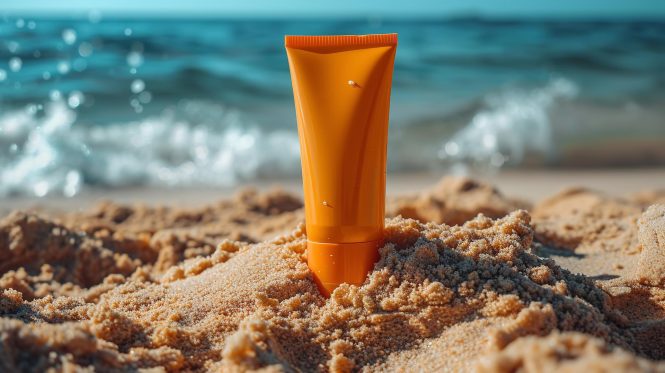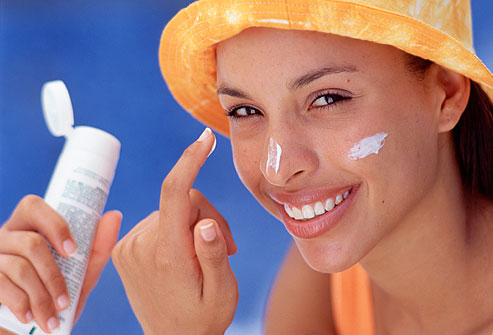

The Sunscreen Spectrum: Choosing the Right Protection for Your Skin Type is a crucial guide for anyone seeking effective sun protection. Protecting your skin from the sun’s harmful UV rays is paramount to preventing long-term damage and skin cancer. Sunscreen, a vital component of sun protection, comes in a variety of types and formulas. This comprehensive guide explores the nuances of the sunscreen spectrum, enabling you to understand and choose the right sunscreen tailored to your unique skin type and concerns. We will delve into the science behind different sunscreen types, explore the importance of broad-spectrum protection, discuss suitable ingredients for specific skin types, and ultimately provide you with the knowledge to make informed choices for optimal sun safety. This article will be structured as follows: 1) Understanding the Different Types of Sunscreen, 2) Choosing the Right SPF for Your Needs, 3) The Importance of Broad-Spectrum Protection, 4) Key Ingredients and Skin Types, 5) Sunscreen Applications and Considerations, 6) Protecting your skin from harmful UV exposure
Understanding the Different Types of Sunscreen
Sunscreen formulations vary considerably, impacting their efficacy and suitability for different skin types. A crucial initial step in finding the right sunscreen involves understanding the different types available.
Chemical Sunscreens
Chemical sunscreens absorb UV rays and convert them into heat, releasing them back into the atmosphere. Common active ingredients include oxybenzone and octinoxate. While often effective, there are concerns about their potential environmental impact and potential skin sensitivities for some individuals.
Mineral Sunscreens
Mineral sunscreens, on the other hand, work by physically blocking UV rays. The most common ingredients are zinc oxide and titanium dioxide. These tend to be gentler on the skin and often a preferred choice for individuals with sensitive skin or allergies. Consider this when choosing the best sunscreen for your skin type.
Physical and Chemical Sunscreen Comparison
Choosing between chemical and mineral sunscreens necessitates careful consideration of individual needs. Chemical sunscreens might offer broader protection due to their deeper absorption. Mineral sunscreens, conversely, tend to be gentler and more easily absorbed. Many consider this to be an important factor in selecting a suitable sunscreen.
Choosing the Right SPF for Your Needs
Sun Protection Factor (SPF) is a crucial metric when evaluating sunscreens. It indicates how much longer you can stay in the sun before getting sunburned compared to when not using sunscreen.
Understanding SPF Values
SPF values range from 15 to 100+ and increase the time you can spend in the sun before burning. Higher SPF values offer greater protection, but the difference in protection between, say, SPF 30 and SPF 50, is relatively minimal. The difference in cost is often significant.
Individual Considerations
Individuals with fair skin, a history of sunburns, or increased sun exposure may benefit from higher SPF values. Individuals with darker complexions generally may need less protection, but it is still crucial to wear sunscreen consistently.
SPF and Daily Needs
The SPF you choose should be appropriate for your daily routine and environment. On a beach day, a higher SPF might be recommended, while an SPF 15 might be sufficient for a typical day out shopping. Factor in your lifestyle and environment when deciding which SPF is ideal for you.
The Importance of Broad-Spectrum Protection
Broad-spectrum protection is critical for comprehensive sun safety. Protecting yourself against both UVA and UVB rays is essential.
UVA and UVB Rays
UVA rays penetrate deeper into the skin, contributing to premature aging, wrinkles, and long-term damage. UVB rays are primarily responsible for sunburn, and therefore are a critical concern for many. It is best to choose a sunscreen that protects against both to maximize your sun safety.
Broad-Spectrum Protection Options
Sunscreens categorized as “broad-spectrum” protect against both UVA and UVB rays. Look for this label on sunscreen packaging for optimal protection.
Protecting against both types of rays is essential
Protect yourself against both damaging UVA and UVB rays by selecting broad-spectrum sunscreens. This comprehensive protection is an important component of sun safety.
Key Ingredients and Skin Types
Sunscreen ingredients play a significant role in the effectiveness and suitability of a sunscreen for a particular skin type.
Ingredients and Their Impact
Some ingredients, like oxybenzone, are known to be hormone disruptors, raising potential health concerns. Mineral-based sunscreens generally avoid these concerns. Understanding the specific ingredients in a sunscreen is essential for those with sensitivities.
Sensitive Skin Considerations
Individuals with sensitive skin may need to choose sunscreens specifically designed for sensitive skin types. Look for sunscreens that use hypoallergenic ingredients to avoid irritation.
Specific Ingredient Reviews
Always read the ingredients list carefully to ensure the sunscreen does not contain ingredients that may cause irritation or allergic reactions. Review ingredient lists, such as zinc oxide and titanium dioxide, for optimal safety and protection.
Sunscreen Applications and Considerations
Proper application and usage of sunscreen are crucial for maximizing effectiveness.
Application Frequency
Reapply sunscreen frequently, especially after swimming or sweating, to maintain effective sun protection. Consider reapplication every 2 hours to maintain protection.
Application Techniques
Apply sunscreen liberally and evenly to all exposed skin at least 15-30 minutes before sun exposure. Be sure to use enough to achieve optimal coverage.
Sunscreen for Children and the Elderly
Sunscreen is vital for both children and the elderly. Ensure you apply sunscreen to exposed skin for comprehensive protection, especially in hot climates.
Protecting your skin from harmful UV exposure
Protecting skin from harmful UV exposure is paramount for long-term skin health. By taking preventative measures, individuals can reduce their risk of premature aging, skin cancer, and other related issues.
UV exposure and its impact
High exposure to UV rays can lead to a range of issues, including sunburn, skin cancer, and premature skin aging. Taking protective measures can minimize these risks.
Sun Safety Practices
Practicing sun safety, including wearing protective clothing, seeking shade, and using sunscreen, is essential for minimizing the harmful effects of the sun on your skin. Consider these methods when making choices about sunscreen usage.
The Sunscreen Spectrum: Additional Tips
Beyond choosing the correct sunscreen, numerous factors influence optimal protection. This section outlines considerations for effective sun protection.
Clothing Considerations
Wearing protective clothing, like long sleeves and hats, provides an additional layer of defense against sun exposure. Consider this as part of a broader strategy.
Sun Protection Habits
Establishing regular sun protection habits is essential for maintaining overall skin health. Consistency in sun safety leads to lasting results.
Additional Considerations
Incorporating factors such as time of day, intensity of sun exposure, and individual skin sensitivity will further enhance your ability to make informed choices about sunscreen use. This tailored approach yields optimal results.
Frequently Asked Questions
What is the best sunscreen for everyday use?
Sunscreen for everyday use should be broad-spectrum, have a minimum SPF of 30, and be suitable for your skin type. Consider factors such as skin sensitivity and the frequency of sun exposure. Read reviews and research different brands to find the best fit for your needs. This allows you to identify options that may be suitable for regular use.
How often should I reapply sunscreen?
Reapply sunscreen every two hours, or more frequently after swimming or sweating. This ensures continuous protection from the sun’s harmful UV rays. This is crucial for maintaining protection throughout the day. Be mindful of your exposure levels and reapply as needed to optimize protection.
In conclusion, understanding the sunscreen spectrum is crucial for optimal sun protection. Choosing the right sunscreen for your skin type, concerns, and lifestyle is key to preventing skin damage and maintaining healthy skin. By considering factors like SPF, broad-spectrum protection, and specific ingredients, you can empower yourself to make informed decisions about sun safety and protect your skin from the harmful effects of the sun. Visit our website for more information on sunscreen recommendations tailored to various skin types. Learn more about finding the right sunscreen for your needs!